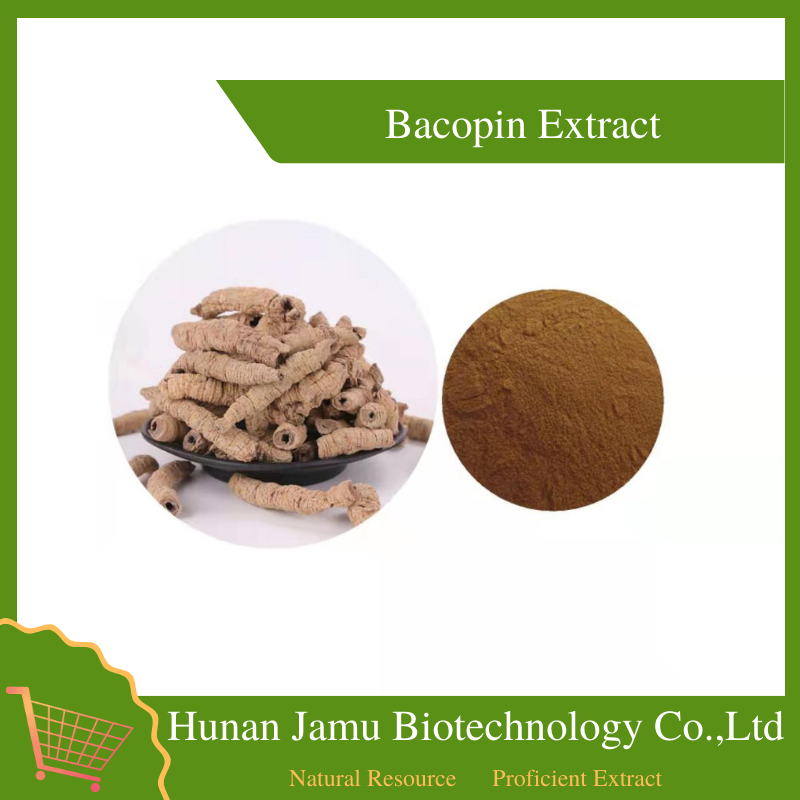 You are here:
Home
> Product Center
> Vegetable & Fruit Ingredient
> View Details
You are here:
Home
> Product Center
> Vegetable & Fruit Ingredient
> View Details


 You are here:
Home
> Product Center
> Vegetable & Fruit Ingredient
> View Details
You are here:
Home
> Product Center
> Vegetable & Fruit Ingredient
> View Details

【Product Name】: Bacopin Extract
【Botanical Name】: Morinda officinalis
【Part used】: Root
【Appearance】: Brownish Yellow powder
【Specification】: 4:1 10:1 / Regular Powder / Rubiadin 1-methyl ether 5-70%
【Storage Period】: 24 Months
【Package】: 1kg/bag 25kg/drum
【Test Method】: HPLC
【Storage Conditions】: Store in cool and dry places. Keep away from strong light and heat.
Description
Vine-like shrubs. The root flesh is thick and cylindrical, swelling irregularly and intermittently, in the shape of a rosary. The branchlets are short and shaggy when young, and become rough later. Opposite leaves, stalk length 4-8 mm, leaves oblong, 6-10 cm long, 2.5-4.5 cm wide, apex acutely or shortly acuminate, base is obtuse or round, sparsely rough or glabrous on top , The underside is thick and short hair along the midrib, and there are short hairs in the vein axillary. The inflorescence is capitate, with 3 to several umbrellas arranged at the end of the branch, the total pedicel is 3-10 mm long, the head has 2-10 flowers, the sepals are 2 to 3 cm long, the lobes are triangular, unequal in size, the corolla is white and fleshy , Up to 7 mm long, lobes 4(3), oblong, incurved, stamens 4, ovary about 1.5 mm long, styles about 0.6 mm long, 2-parted, drupe subglobose, 6-11 mm in diameter, Red when ripe, small nucleus with 4 seeds, nearly ovate or obovate, raised back, flat side, covered with white short hairs. Flowering period is 4-7, fruiting period is June-November.
Chemical Composition
The roots contain anthraquinone components: methyl isomaridin, methyl isomaridin-1-methyl ether, emodin methyl ether, 2-hydroxymethyl anthraquinone, 1-hydroxyanthraquinone, 1-hydroxy-2- Methylanthraquinone, 1,6-dihydroxy-2,4-dimethoxyanthraquinone, 1,6-dihydroxy-2-methoxyanthraquinone, 2-methylanthraquinone. It also contains glucose, nasi sugar, mannose, β-sitosterol, palmitic acid, vitamin C, nonadecane, and 24-ethylcholesterol. Root bark contains 23 elements such as zinc, manganese, iron, and chromium.